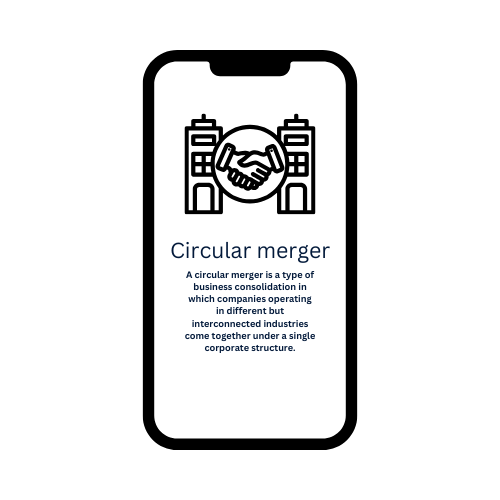An equity swap is a financial derivative contract between two parties that involves exchanging cash flows based on the performance of an underlying equity asset or index. In an equity swap, one party pays a return based on the total return of a specified equity or equity index, including capital gains and dividends, while receiving a fixed or floating rate of interest in return. This arrangement allows investors to gain exposure to equities without directly owning them, providing flexibility in managing risk and enhancing portfolio diversification. Equity swaps are commonly used by institutional investors for hedging or speculative purposes.
What is Equity Swap
An equity swap is a financial derivative agreement between two parties where they exchange cash flows based on the performance of an underlying equity asset or index. In this arrangement, one party pays the total return of a specified equity or equity index (which includes capital gains and dividends) while receiving a fixed or floating interest rate in return. Equity swaps allow investors to gain exposure to equity markets without owning the underlying assets directly.
Structure of an Equity Swap
An equity swap typically involves the following components:
- Parties Involved: The two parties to an equity swap are commonly referred to as the “payer” and the “receiver.” The payer typically pays the equity return, while the receiver pays a fixed or floating interest rate.
- Notional Amount: The notional amount is the underlying value on which the cash flows are calculated. It represents the size of the swap and is not exchanged between the parties.
- Payment Terms: The parties agree on the payment frequency (e.g., quarterly, semi-annually) and the calculation method for the cash flows.
- Duration: Equity swaps have a specified duration, often ranging from a few months to several years.
Mechanics of an Equity Swap
The cash flows in an equity swap are typically structured as follows:
- Equity Return Payment: One party pays the return on the underlying equity or index. This payment is usually based on the percentage change in the value of the equity over a specified period, plus any dividends received during that period.
- Interest Rate Payment: The other party pays an agreed-upon fixed or floating interest rate on the notional amount. A floating rate is often pegged to a benchmark rate, such as LIBOR or SOFR.
The payments are netted against each other, meaning only the difference is exchanged between the parties. For instance, if the equity return payment is higher than the interest payment, the payer will pay the net amount to the receiver, and vice versa.
Advantages of Equity Swaps
Equity swaps offer several advantages to investors:
- Market Exposure: They provide a way to gain exposure to specific equities or equity indices without the need to purchase the underlying shares directly. This can be beneficial for investors looking to hedge or speculate on market movements.
- Flexibility: Equity swaps can be tailored to meet the specific needs of the parties involved, including adjusting notional amounts, payment structures, and underlying assets.
- Hedging: Investors can use equity swaps to hedge against market risks or unwanted exposure to specific stocks or sectors, allowing for better risk management.
- Tax Efficiency: In certain jurisdictions, equity swaps may offer tax benefits compared to direct equity investments, particularly in relation to capital gains and dividend taxation.
Risks of Equity Swaps
While equity swaps provide various benefits, they also carry certain risks:
- Counterparty Risk: The risk that one party may default on its obligations under the swap agreement. This risk is particularly pronounced in the case of over-the-counter (OTC) swaps, where there is no central clearinghouse.
- Market Risk: The value of the equity underlying the swap may fluctuate significantly, impacting the returns for the parties involved. This can lead to unexpected losses.
- Liquidity Risk: Equity swaps may not be as liquid as direct equity investments, making it challenging to exit a position without incurring substantial costs.
- Complexity: The structure of equity swaps can be complex, and investors may require sophisticated knowledge and experience to manage the associated risks effectively.
Examples of Equity Swaps
To illustrate how equity swaps work, consider the following hypothetical example:
- Scenario: Two parties, Party A and Party B, enter into an equity swap agreement with a notional amount of ₹100 million. Party A agrees to pay the total return on a specific stock (e.g., Company XYZ), while Party B agrees to pay a fixed rate of 5% annually.
- Equity Performance: Over the course of the year, Company XYZ’s stock price increases by 10%, and it pays a dividend of ₹1 million. The total return for Party A would be ₹10 million (capital gain) + ₹1 million (dividend) = ₹11 million.
- Interest Payment: Party B pays 5% of ₹100 million, amounting to ₹5 million.
- Net Payment: At the end of the year, the net payment from Party A to Party B would be ₹11 million (equity return) – ₹5 million (interest payment) = ₹6 million.
In this case, Party A benefits from the equity performance while Party B receives a fixed income.
Conclusion
Equity swaps are versatile financial instruments that allow investors to gain exposure to equity markets without directly owning the underlying assets. They offer various benefits, including flexibility, hedging capabilities, and potential tax efficiency. However, investors must be aware of the associated risks, such as counterparty risk, market risk, and liquidity risk. As with any financial derivative, a thorough understanding of the terms and mechanics of equity swaps is essential for effective risk management and investment strategy.







